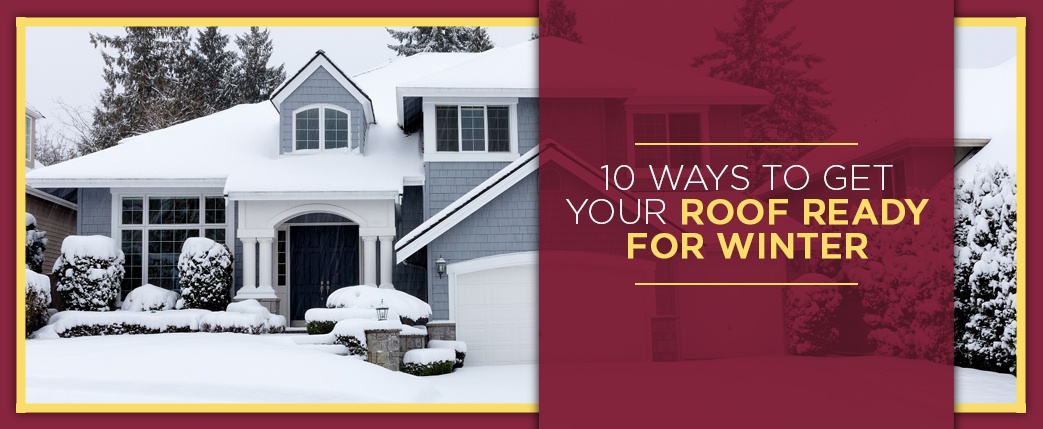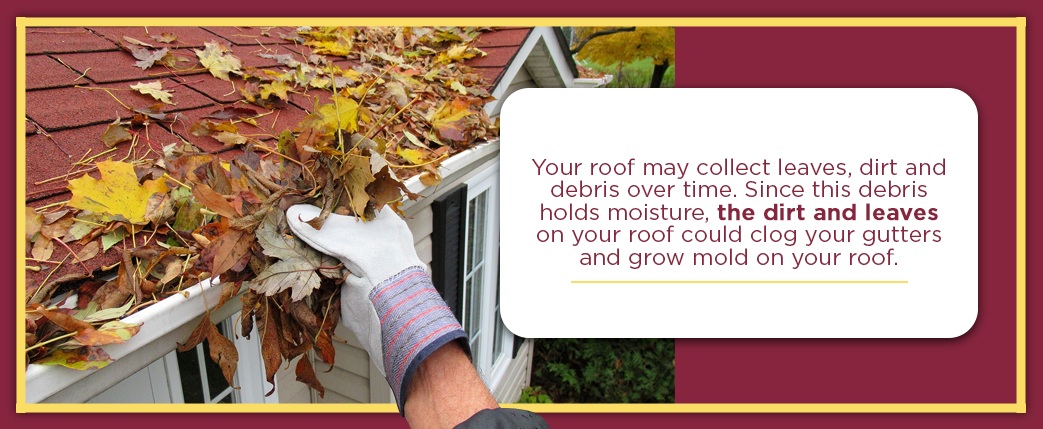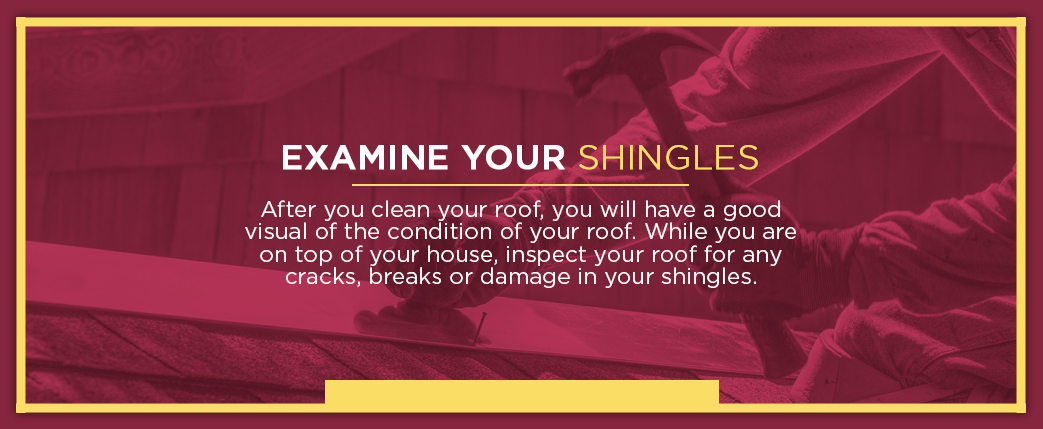Call Today 516-872-0947
- Free Estimate
516-872-0947
- Free Estimate
 Call Today 516-872-0947
Call Today 516-872-0947 516-872-0947
516-872-0947
During the cold winter months, your roof should protect and insulate your home. Starting in the fall, you should have a plan for protecting your roof from damage. Is your roof ready for winter?
To prepare for the seasonal change, you should clear debris and any damage from the fall to keep your home warm and safe during the winter. Cleaning and inspecting your roof at least twice a year — once in the spring and once in the fall — could also help you maintain your roof's warranty. Prepare your roof for winter with these 10 winter roofing tips.
While trees can add protection from sunlight during the summer, they can damage your roof in the winter during heavy storms. Branches can scratch shingles and dent your roof on impact. Trees with needles, leaves or fruit can drop debris onto your roof and cause mold and mildew buildup.
Before pruning or removing hanging branches from your trees, consult an arborist. A professional in the tree industry knows your local area's regulations for tree cutting and will help you protect your home in an eco-friendly manner.
Generally, you can trim any branch hanging over your roof. If you need to trim more than 25 percent of the tree, you may want to remove the tree altogether. You could also prune young trees to control their growth over time. If you already have tree branches on your roof from previous storms, clear your roof of any branches, leaves or twigs.

Your roof may collect leaves, dirt and debris over time. Since this debris holds moisture, the dirt and leaves on your roof could clog your gutters and grow mold on your roof. Cleaning debris from your roof encourages healthy water drainage and protects the structural integrity of your roof. In the fall, you may want to prepare for debris buildup by installing gutter screens or guards.
You should clean your roof at least twice a year as a preventative measure. Use heavy gloves when picking up moist debris on your roof. For extra help, a professional roofer knows what to do in the winter to check for structural damage and assess if the roof needs to be repaired or replaced.
Consider what type of roof you have before you start cleaning the dirt off of the top of your home:
In the winter, your roof's edges could have structural damage from ice dams that form in the cold. Install the proper ventilation system to protect your roof's edge from damage due to the cold weather. Also check your roof's edges for any changes in pitch to figure out if you need new flashing.
Flashing is a metal fixture that wraps around the edges of your roof. To determine if you need to install flashing, look for any changes in elevation — from shallow to deep — or a convex or concave shape on your roof's edges. If you see any abnormal shape in your roof's edges, you may need to install flashing to repair the problem.
Flashing can also prevent wood decay and leaking around your roof's edge. If you already have flashing, you may need to replace or reseal any flashing with openings or dents. You should inspect the flashing on your roof at least once a year.
Your home's gutters — or eavestroughs — protect your home from water damage. Gutters control the flow of water during a storm to keep water away from the foundation of your home. As the temperature drops, water could turn to ice and could form icicles around your property if your gutters are clogged.
During the fall, leaves can accumulate in your gutters. An overflow of water and snow could result in damage to the roof, the siding and the trim of your home. Your gutters could even fall off if they collect too much water or snow.
If you start cleaning in the fall, you will save more time in the winter. You can install gutter guards and screens to prevent leaves from infiltrating your gutters. Cleaning your gutters will help you keep your roof cleaner overall.
In addition to essential tools like rubber gloves and a gutter scoop, you may want to buy some gutter spikes, a gutter sealant and rivets in case your gutters need to be replaced. Ask someone to spot you as you stand on the ladder in case you fall. Clean from one side of your gutters to the other, scooping out the debris into a bucket.
Examine the downspout of your gutter for any blockages that could cause water buildup over time. Clean all debris from the downspout to ensure functional gutters to protect your roof. Run a hose through your gutters to remove any residual buildup and use the water to make sure your gutters are working properly.
When you finish cleaning, check your gutters for holes. Any damaged parts of your gutters need to be replaced and sealed with a bead silicon sealant. You or a professional roofing company should clean and inspect your gutters at least once a year, but we recommend cleaning your gutters more often if you live in a damp area or have trees overhanging your roof.

After you clean your roof, you will have a good visual of the condition of your roof. While you are on top of your house, inspect your roof for any cracks, breaks or damage in your shingles. You should especially check areas of your roof that are more prone to leaks, such as your chimney or any skylights or vents.
If you notice any cracks or moisture damage, you will have to replace the shingles or the whole roof itself. During the fall, have a professional company come in and inspect your roof for you before the winter snow and winds begin. They can assess the damage and even replace broken parts of your roof.
We recommend inspecting your shingles twice a year. Keep a record of all roof inspections done to protect the warranty on your roof. You may need a new roof if your roof is at least 15 years old or if your shingles are broken or missing.
When you have any damage in your roof, you may be unknowingly inviting wild animals into your home. You may have animals in your roof or attic if you hear scratching or rustling in your walls. Regularly check your roof for animals to prevent the animals from reproducing and multiplying in your living space.
Before sealing anything on your roof, inspect for birds nests and animals scurrying around your attic. You could accidentally seal an animal into your roof if you do not inspect your roof for animals first.
Make sure that you regularly maintain the trees in your yard to prevent wild animals from climbing onto your roof. You should cover your outside trash to keep unwanted pests from exploring your yard. Clean your gutters often and inspect for animals hiding in your cozy chimney during the cold winter months.
Since animals can crawl into the spaces in your roof, you may find them in your attic as well. If you hear rustling coming from the upstairs, check your attic for wild animals and nests. Hire a professional if you are not comfortable with dealing with animals yourself.
Whether you have a warranty on your roof or your homeowner's insurance covers damage done to your roof from weather or other factors beyond your control, you should be aware of what is covered before any damage happens this winter.
Most shingled roofs have a warranty for an average of 30 years. If you have any repairs or inspections done on your roof, make sure you keep a file of your roof's maintenance to protect your roof's warranty. Your warranty may require regular cleaning of your roof, or else your warranty could be voided.
Your homeowner's insurance may also cover any damage done to your roof. Your roof protects your home from leaks and interior damage, so insurance companies will place a high value on your roof. If you have any older roof — more than 20 years old — you may have to replace your roof before you apply for a homeowner's insurance policy.
Typically, insurance companies cover roof damages caused by fire, vandalism and weather incidents like tornadoes and hurricanes.
You are responsible for routine roofing improvement projects, so insurance companies only cover incidents that occurred beyond your control. Your insurance company may cover leaky roofs if you provide evidence that the roof has been properly maintained.
If your roof has any cracks or leaks, the first place in the interior of your home to see any damage is your attic. Inspect your attic by checking for moisture damage and leaks in the walls. Hire a professional to walk through your attic and inspect for specific signs of moisture damage.
Wild animals could be hiding in your attic if there are any cracks in your roof. If you find wild animals in your attic, inspect your roof for missing shingles or damage. You should also check your yard for any branches hanging over your roof that could have allowed animals to climb onto the top of your house.
Consider adding attic ventilation to your home. The proper attic ventilation structure can reduce snow and ice accumulation on your roof and can allow air to flow freely in the attic. You could save money and energy by keeping your attic at the proper temperature.
Walk through your attic with a flashlight and look for rays of sunshine, wet insulation or stains on the wall. If you have any abnormal light or water in your attic, you may need to replace your roof. Checking your attic in the fall can help you avoid the hassle of replacing a roof in the winter.

Roof valleys are the low spots on your roof where two sloped sections meet. Sometimes they are covered with V-shaped strips of metal. The valleys of your roof can experience leaks. Take extra care to clear any debris that has accumulated in the valleys of your roof and inspect for wear and tear.
If your roof valleys are made of metal, they can rust or corrode over time when they come in contact with debris. All valleys trap leaves that hold moisture and can grow mold. Repairing roof valleys is relatively common, so you could consider a patch repair if you have an excess amount of rust or corrosion.
As you inspect your roof valleys, check for holes to protect your home from leaking. You can cover small holes with patches of cement while larger holes will need professional repair. After inspection, clean your roof valleys with a wire brush.
A professional contracting company understands the technicalities of a roof warranty and what types of damage insurance companies cover. Professional roofers have experience dealing with rodents and pests in the home, so they will know what to look for and can remove these unwanted guests. They will also know how to inspect the interior and exterior of the home to determine the structural integrity of the roof.
Hiring a professional company is the ideal way to prepare your roof for the winter. Brothers Aluminum has served the greater New York area by improving and remodeling homes. We will inspect, install and repair roofs to protect your home during those cold winter months.
With more than 40 years of experience contracting roofs for homeowners in Nassau County, Suffolk County, Queens County, Westchester County, and Long Island, our trustworthy team at Brothers Aluminum will help you get your roof ready for winter. We do basic roofing installation and offer roofing renovation services for your damaged or worn-out roof. Contact us for a free, no-obligation estimate or for more information about how to protect your home this winter.